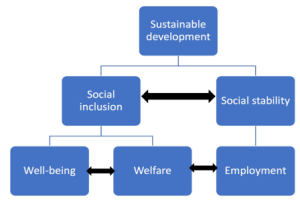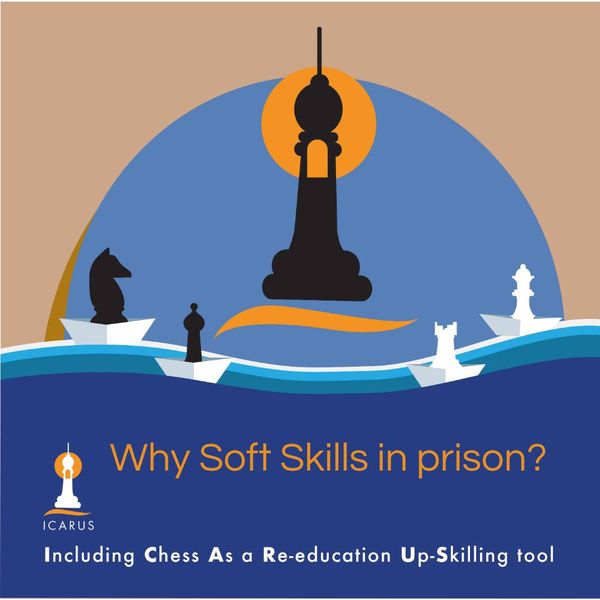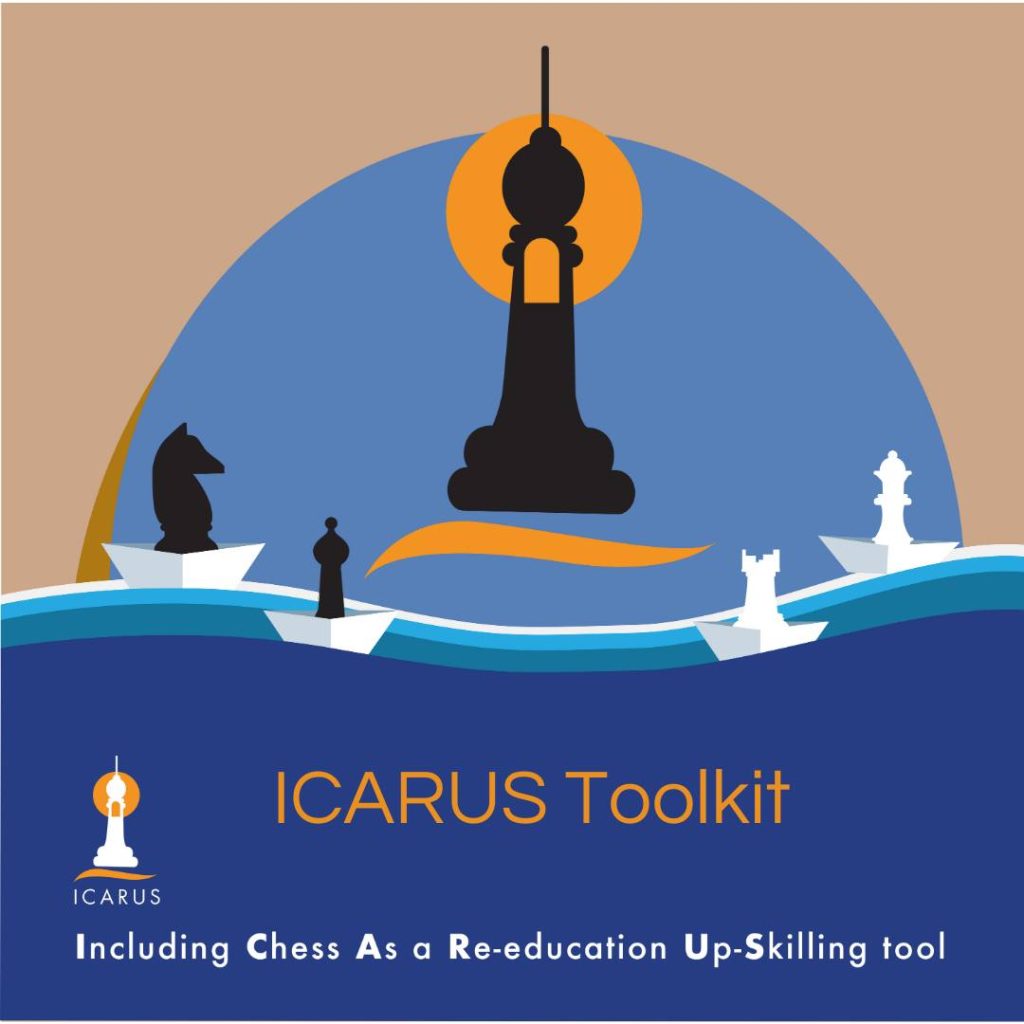Andreas Ahrens1, Antonia Castellani2, Maria Chiara Di Francesco3, Jelena Zascerinska4, Mihails Zascerinskis5, Anastasija Bikova6, Irina Abjalkiene7, Olga Gukovica8, Ludmila Aleksejeva9
1 Dr.-Ing. habil. (Electrical Engineering), Professor, Hochschule Wismar University of Applied Sciences Technology, Business and Design, Wismar, Germany, e-mail: andreas.ahrens@hs-wismar.de
2 Senior researcher, Skill Up, Rome, Italy, e-mail: a.castellani@skillupsrl.it
3 Junior researcher, Skill Up, Rome, Italy, e-mail: mc.difrancesco@skillupsrl.it
4 Dr. paed., Leading researcher, Centre for Education and Innovation Research, Riga, Latvia, e-mail: iizi.info@inbox.lv
5 Scientific Assistant, Centre for Education and Innovation Research, Riga, Latvia, e-mail: mihails.zascerinskis@gmail.com
6 MA student, Hochschule Wismar University of Applied Sciences Technology, Business and Design, Wismar, Germany, e-mail: anastasija.bikova@hs-wismar.de
7 Scientific Assistant, Centre for Education and Innovation Research, Riga, Latvia, e-mail: irinaabjalkiene@inbox.lv
8 Scientific Assistant, Centre for Education and Innovation Research, Riga, Latvia, e-mail: srripka@inbox.lv
9 Scientific Assistant, Centre for Education and Innovation Research, Riga, Latvia, e-mail: asava@inbox.lv
Abstract.
Purpose and aim of the study: The paper’s aim is to describe and analyse best practices in use of chess as an educational tool for enhancing disadvantaged groups’ social inclusion and employment in selected European countries.
Design / Methodology / Approach: The methodology of descriptive research and study was employed in the present research. A focus group interview was leveraged as the method of data collection in May 2024. A total of 15 respondents from Latvia, Italy, and Spain participated in the interview. Categorisation as a classification method in a descriptive study was used for data analysis.
Main Findings: The data analysis demonstrated that Italy and Spain utilised chess as an educational tool in a non-classical way, while Latvia continued to keep chess as an educational tool in a conventional manner.
Originality: The originality of the paper is shown by three categories of use of chess as an educational tool for disadvantaged groups. The categories were identified as target group, level of initiative, and classical/non-classical use of chess as an educational tool.
Implications: The researcher community could invest more efforts into analyses of use of chess for social inclusion and employment of disadvantaged groups due to the chess game’s unique capabilities.
Keywords: categorisation, chess game, classification, disadvantaged groups, employment, prison inmates, social inclusion.
DOI: https://doi.org/10.17770/jresd2024vol16.8268
Introduction
Sustainable development implies active involvement of all society members in social and economic life (Ahrens et al., 2023). Ensuring the active participation of disadvantaged members of society in social and economic life requires specific educational efforts from the community. Disadvantaged groups conventionally have a low level of education (Farquharson et al., 2022) despite education remaining a key factor in social integration and employment of all the society members in general and disadvantaged groups particularly.
Another important factor that is often experienced by many disadvantaged groups is their mobility limitation. It can be due to some physical disabilities, vision impairment (Siu, 2010), or, for example, a prison sentence.
An analysis of the limitations disadvantaged groups might have led to the selection of chess as an educational tool (Jankovic & Novak, 2019) for strengthening disadvantaged groups’ social inclusion and employment. Chess is a convenient model to be used for disadvantaged groups’ social inclusion and employment, as chess helps in studying individual thinking patterns (Dvoryatkina & Simonovskaya, 2021). Also, the relation between strength of play and patterns involving problem solving exist (Ferreira & Palhares, 2008). Chess helps to improve decision making, analysing the situation (Senthil & Ravindran, 2023) and resource management. By understanding the psychology (problem solving, pattern recognition, decision making, etc) of players and opponents, the steps in the game as well as social inclusion and employment can be determined (Dvoryatkina & Simonovskaya, 2021).
The scientific relevance of this research is reflected in the increased understanding of use of chess as an educational tool for strengthening disadvantaged groups’ social inclusion and employment.
The research question is put forward: can chess be used as an educational tool for strengthening disadvantaged groups’ social inclusion and employment?
The aim of this research is to describe and analyse best practices in use of chess as an educational tool for enhancing disadvantaged groups’ social inclusion and employment in selected European countries. The tasks of this research:
- To analyse scientific literature on chess as an educational tool for social inclusion and employment of disadvantaged groups.
- To establish links between sustainable development, social inclusion, social stability, well-being, welfare, and employment.
- To carry out an empirical study to describe best practices in use of chess as an educational tool for enhancing disadvantaged groups’ social inclusion and employment in selected European countries.
- To draw conclusions.
Classification as a method of descriptive research was utilised in this research. A qualitative study will be implemented. The originality of the paper is shown by a classification of the use of chess as an educational tool for enhancing disadvantaged groups’ social inclusion and employment. The method of data collection was a focus group interview. The data were collected in May 2024. The findings of this research disclose the classification of use of chess as an educational tool for enhancing disadvantaged groups’ social inclusion and employment in selected European countries. The novel nature of this research is shown by the classification of use of chess as an educational tool in selected European countries.
Research results and discussion
Theoretical Analysis
Sustainable development is rooted in social inclusion (Cano-Hila, 2022) for all social groups including disadvantaged groups. It should be noted that disadvantaged groups include groups of migrants, ethnic minorities, people with disabilities, isolated people, lonely elderly people, children, people from remote areas, people who face economic, social and/or cultural barriers, etc. (Ahrens et al., 2024).
Social inclusion means such a society in which all people feel valued, their differences are respected, and their basic needs are met so they can live in dignity (Robo, 2014). Social inclusion implies that no one should be left behind (United Nations, 2016). Social inclusion lays the paved path to social stability. And social stability is closely linked to employment. Employment supports peoples’ well-being and welfare (Ahrens et al., 2024).
Social inclusion as well as employment of disadvantaged groups, on the one hand, and their well-being and welfare, on the other hand, impact each other. Social inclusion and employment improve well-being and welfare of disadvantaged groups. Conversely, the worsening of well-being and welfare of disadvantaged groups decreases their
opportunities for social integration and employment.
Figure 1 illustrates links between sustainable development, social inclusion, social stability, well-being, welfare, and employment.

Fig.1 Links between sustainable development, social inclusion, social stability, well-being, welfare, and employment (authors’ construction)
These relationships between social inclusion and employment of disadvantaged groups, on the one hand, and their well-being and welfare, on the other hand, need a specific attention, more time, and extra efforts from the community.
Personal well-being is related to education (White, 2012). Education impacts personal success or, in other words, well-being in its conventional understanding (White, 2012). Higher levels of education and, consequently, qualifications are strongly associated with better prospects in the labour market (Farquharson et al., 2022). It means that more and higher education leads to better well-being and welfare. Therefore, education is considered as an opportunity for strengthening disadvantaged groups’ social inclusion and employment.
In education, a variety of tools can be used for improving disadvantaged groups’ social inclusion and employment. Chess as an education tool was selected as the chess game enhances the inclusiveness of disadvantaged groups, as regarded by chess federations, social workers, youth trainers, and others (Ahrens et al., 2024). Inter-connections between social inclusion, well-being, education, and chess are demonstrated in Figure2.

Fig.2 Inter-connections between social inclusion, well-being, education, and the chess game (authors’ construction)
Chess as an education tool obtains unique capabilities for personal development and upbringing (Romanova et al., 2018). Chess gamers benefit from learning mathematics, logics, problem solving, resource management (Ahrens et al., 2024).
Thus, the chess game is expected to increase the educational level of a member of a disadvantaged group. A higher educational level is supposed to enrich personal well-being. Enriched personal well-being is assumed to strengthen the person’s social inclusion.
It should be noted that the theoretical interconnections between the chess game and social inclusion have been emphasized: a chess play may impact the improvement of the individual’s metacognition, thereby increasing this individual’s inclusiveness (Ahrens et al., 2024).
Methodology of the Study
The research question that enabled the present research was formulated as follows: What kind of best practices in use of chess as an educational tool enhances disadvantaged groups’ social inclusion and employment in selected European countries?
The purpose of the empirical study was to collect, analyse and classify best practices in use of chess as an educational tool to enhance disadvantaged groups’ social inclusion and employment in selected European countries.
The empirical study was descriptive, as the study intended to describe best practices. Features of best practice are to be identified via classification. Classification is used to create categories that are internally homogeneous and externally heterogeneous (Krippendorff, 2004; Patton, 2002) in all kinds
of environmental interaction (Leinen, 2020). Categorisation is helpful for decision making (Seger & Peterson, 2013), prediction, and inference (Leinen, 2020).
The methodological process of this descriptive study was organised in three phases (Ahrens et al., 2019):
- Phase 1 – Data Collection,
- Phase 2 – Data pre-processing and processing, and
- Phase 3 – Data analysis and interpretation.
The empirical study was implemented in June 2024. The method of data collection was a focus group interview. A focus group interview is useful for examining the existence of knowledge as well as the construction of opinion on this knowledge in a cultural context (Kitzinger, 1995). The selection of respondents for taking part in the focus group interview was based on three criteria (Zaščerinska et al., 2015):
– respondent’s knowledge of a given topic,
– respondent’s cultural difference and education’s diversity (occupation, training, etc), and
– participant’s hierarchy in the group.
Greater heterogeneity of the group’s respondents implies fewer respondents in this group (Okoli & Pawlovski, 2004).
The focus group interview was based on the question to be answered by the respondents: What best practices in use of chess as an educational tool enhances disadvantaged groups’ social inclusion and employment in your country?
The data analysis was based on content analysis and interpretation. The combination of both – content analysis and interpretation – facilitated an interpretive content analysis. Interpretive content analysis allows for linking the categories, namely programmes and methods in this research, in the coding process and in the analysis of results (Drisko & Maschi, 2024). Therefore, data reliability was ensured. It should be pointed out that reliable data refer to data that can be a trusted basis for analysis and decision-making (Talend, 2024). A content analysis and interpretation were carried out by the researchers who had been engaged in the interview organisation and implementation (Ahrens et al., 2018).
The sample was composed of 15 respondents. Nine respondents were educational trainers who represented Italy, Latvia and Spain. Six other respondents were chess trainers from the same countries, namely Italy, Latvia and Spain. All the respondents obtained training experience from disadvantaged groups. Eight respondents were female, and seven respondents were male. Table 1 summarizes the characteristics of the sample respondents.
Table 1 Characteristics of the sample respondents (compiled by the authors)
| Characteristics | Females | Males | Total |
|---|---|---|---|
| Number of respondents | 8 | 7 | 15 |
| Number of respondents with training experience from disadvantaged groups |
8 | 7 | 15 |
Interview results, findings and discussion
The data were collected on 27-28 May 2024. The data were collected during the transnational ICARUS project meeting in Perugia, Italy. The task was to share best experience in using chess as an educational tool when working with a disadvantaged group.
Two educational trainers from Latvia presented chess training programmes available in Latvia for prisoners as shown in Table 2:
Table 2 Chess training programme in Latvia (compiled by the authors)
| Nr. | Programme title | Programme aim | Link |
|---|---|---|---|
| 1. | Chess in the Prison Programme in Latvia |
It promotes positive use of leisure time for inmates, improving their behaviour, helping to reduce violence and developing communication skills. |
https://x.com/FIDE_chess/status/1799369975087484940
https://www.fide.com/news/1811?fbclid=IwY2xjaw |
| 2. | Chess for the Freedom Programme |
It helps people who have made mistakes in the past serve their sentences to be prepared for their new lives and to make sure they feel responsible for each move they make |
https://x.com/FIDE_chess/status/1799369975087484940
https://www.fide.com/docs/regulations/Social%20Commis |
| 3. | Chess in the Prison Programme supported by the European Chess Union |
It aims to use chess as a cognitive rehabilitation tool for prison in-mates along with those currently and formerly incarcerated. |
https://www.europechess.org/with-chess-to-freedom-project chess-in-prison/ |
Two chess trainers from Italy shared their experience in leveraging chess as an educational for working with people with mental problems, as revealed in Table 3.
Table 3 Chess training for people with mental problems in Italy (compiled by the authors)
| Nr. | Column 2 | Column 3 |
|---|---|---|
| 1. | Pattern recognition | To describe patterns in the format of -a tree -a map |
| 2. | Skimming | To use skimming for the analysis of -the whole chess board, and -chess pieces |
| 3. | Macro and micro vision | To make a decision on further actions, taking responsibility for the use of choices and their consequences, via the analysis of pros and cons of -the whole chess board, and -chess pieces |
| 4. | Resource management | To use chess pieces in an effective manner while sacrificing the chess pieces, converting a pawn into a queen and knight, a short- and long-term perspective on game outcomes as well as empathy |
Two chess trainers from Spain revealed their methods in utilising chess as an educational for working with autists and people with cognitive problems, as revealed in Table 4.
Table 4 Chess training for autists and people with cognitive problems in Spain (compiled by the authors)
| Nr. | Method | Tasks |
|---|---|---|
| 1. | Mnemonic techniques |
-To give people’s names to chess pieces -To put chess pieces in a random way, to ask for the pieces’ names -To re-install the pieces, and ask for the pieces’ names again -To add extra pieces, and start from the beginning -To discuss chess pieces’ colour, shape, and place on the chess board |
| 2. | Pawn race | To keep as many pawns as possible in a chess game |
| 3. | Chess as a metaphor | To describe imprisonment status (transfer, punishment, free, etc.) using chess pieces |
For categorisation, the country of the method, a target group, and the level of initiative (Siu, 2010) were chosen. Table 5 gives an overview of the analysis of experience in using chess as an educational tool for disadvantaged groups presented by the focus group respondents.
Table 5 Categorisation of the methods (compiled by the authors)
| Nr. | Method | Country | Target group | Level of initiative |
|---|---|---|---|---|
| 1. | Chess in the Prison Programme in Latvia |
Latvia | prisoners | Government |
| 2. | Chess for the Freedom Programme | Latvia | prisoners | Organisation |
| 3. | Chess in the Prison programme supported by the European Chess Union |
Latvia | prisoners | European |
| 4. | Pattern recognition | Italy | people with mental problems |
Trainer |
| 5. | Skimming | Italy | people with mental problems |
Trainer |
| 6. | Macro and micro vision | Italy | people with mental problems |
Trainer |
| 7. | Resource management | Italy | people with mental problems |
Trainer |
| 8. | Mnemonic techniques | Spain | autists and people with cognitive problems |
Trainer |
| 9. | Pawn race | Spain | autists and people with cognitive problems |
Trainer |
| 10. | Chess as a metaphor | Spain | autists and people with cognitive problems |
Trainer |
Table 6 presents the countries’ profiles for the use of chess as an educational tool in their work with disadvantaged groups.
Table 6 Country profile in use of chess as an educational tool (compiled by the authors)
| Nr. | Category | Latvia | Italy | Spain |
|---|---|---|---|---|
| 1. | Target group | Prisoners | People with mental problems |
Autists and people with cognitive problems |
| 2. | Level of initiative | Organisation | Trainer | Trainer |
| 3. | Classic/nonclassic use | Classic | Non-classic | Non-classic |
The finding was that Italy and Spain used chess as an educational tool for different groups of disadvantaged people, while in Latvia chess was utilised for one disadvantaged group, namely, prisoners. However, Latvia’s respondents pointed out that many prisoners in general and particularly in Latvia had mental and cognitive problems. Another finding was that Italy and Spain used chess in a non-classic way for disadvantaged groups, while Latvia kept the classic way or, in other words, playing chess and using chess as an educational tool. An interesting finding was that in Italy and Spain, the use of chess as an educational tool for disadvantaged groups was initiated by trainers, while in Latvia – by organisations including governmental institutions. It can be explained that, in Latvia, any training in prison is institutionalised. In comparison, the respondents from Italy and Spain provided trainings to other groups of disadvantaged trainees as well.
Conclusions and suggestions
The literature analysis established two conceptual links. The first link connects as well as provides the hierarchy between sustainable development, social inclusion, social stability, well-being, welfare, and employment. The second link shows the inter-connections between social inclusion, well-being, education, and chess. Following the logical chain of these theoretical links, chess is defined as an educational tool for social inclusion and employment of disadvantaged groups.
These two conceptual links are innovative scientific elements of this research.
The empirical study’s results arrived at three categories of use of chess as an educational tool for disadvantaged groups. The categories were identified as a target group, the level of initiative, and the classical/non classical use of chess as an educational tool. The data analysis demonstrated that Italy and Spain utilised chess as an educational tool in a non-classical way, while Latvia continued to keep chess as an educational tool in a conventional manner.
These three categories (target group, level of initiative, and classical/non-classical use of chess game) enhanced the scientific relevance of this research by increasing the understanding of use of chess as an educational tool for strengthening disadvantaged groups’ social inclusion and employment.
The present research and study have some limitations. The theoretical analysis was limited by the number of existing publications on the topics available via google search. The empirical analysis was limited by the engagement of only few respondents from three European countries. The focus group interview might include limitations in depth of insights and the risk of biased responses.
Future research should involve more respondents from more countries in empirical studies. Comparative studies on this topic are of great research interest, too.
Acknowledgement
The presented work has been carried out within the Project “Including Chess as a Re-education Up-Skilling Tool” (ICARUS), KA220-ADU – Cooperation partnerships in adult education, Project Number 2023-1-IT02- KA220-ADU-000152409.
We are thankful to the respondents who took part in the focus group interview, and those who have contributed to this thematic issue, for their time and effort.
References
- Ahrens, A., Gruenwald, N., Zaščerinska, J., & Melnikova, J. (2019). A Novel Design of the Pre-Processing Stage of Data Mining for Educational Purposes. Proceedings of the 9th BRCEBE & 12th ICEBE, Sibiu, România, 16 – 19 October 2019, 368-376.
- Ahrens, A., Purvinis, O., Zaščerinska, J., Micevičienė, D., & Tautkus, A. (2018). Burstiness Management for Smart, Sustainable and Inclusive Growth: Emerging Research and Opportunities. IGI Global. DOI: 10.4018/978-1-5225-5442-4
- Ahrens, A., Zascerinska, J., Bikova, A., Aleksejeva, L., Zascerinskis, M., Gukovica, O., & Abjalkiene, I. (2024). Chess Play as a Means of Improving Inclusiveness of Disadvantaged Groups. Education. Innovation. Diversity, 1(8), 134 – 142.
- Ahrens, A., Zascerinska, J., Zascerinskis, M., & Bikova, A. (2023). Gender Discrimination in Youth Employment: A Case Study in Germany. Journal of Regional Economic and Social Development, 15, 7-16.
- Cano-Hila, Ana Belén. (2022). Understanding Social Inclusion in Contemporary Society: Challenges, Reflections, Limitations, and Proposals. Social Inclusion, 10(2), 1–5.
- Drisko, James W., & Tina Maschi. (2024). Interpretive Content Analysis, Content Analysis, Pocket Guides to Social Work Research Methods (New York, 2015; online edn, Oxford Academic, 19 Nov. 2015).
- Dvoryatkina, S., & Simonovskaya., G.A. (2021). Using Chess for Identifying and Correcting “Problem Areas” in the School Math Course. TEM Journal, 10(1), 451-461. ISSN 2217-8309, DOI: 10.18421/TEM101-57, February 2021.
- Farquharson, C., McNally, S. & Tahir, I. (2022). Education inequalities. IFS Deaton Review of Inequalities.
- Ferreira, D., & Palhares, P. (2008). Chess and problem solving involving patterns. The Mathematics Enthusiast, 5(2), Article 8. https://doi.org/10.54870/1551-3440.1105
- Jankovic, A., & Novak, I. (2019). Chess as a Powerful Educational Tool for Successful People, In: Tipurić, Darko Hruška, Domagoj (Ed.): 7th International OFEL Conference on Governance, Management and Entrepreneurship: Embracing Diversity in Organisations. April 5th -6th, 2019, Dubrovnik, Croatia, Governance Research and Development Centre (CIRU), Zagreb, 425-441.
- Kitzinger, J. (1995). Education and debate Qualitative Research: Introducing focus groups. BMJ 1995; 311:299-302 (29 July).
- Krippendorff, K. (2004). Content analysis: an introduction to its methodology. Sage Publications Inc., Thousand Oaks, California.
- Leinen, P. (2020). The importance of categories. https://www.linkedin.com/pulse/importance-categories-patrick-leinen
- Okoli, C., & Pawlovski, S. (2004). The Delphi Method as a Research Tool: an example, design considerations and applications. Information and Management, 42(1), 15-29.
- Patton, M.Q. (2002). Qualitative, research & evaluation methods. Sage publications Inc., Thousand Oaks, California.
- Robo, M. (2014). Social inclusion and inclusive education. Academicus International Scientific Journal, 10(2):181-191
- Romanova, I., Vasylieva, M., & Podberezskyi, M. (2018). Chess therapy as a new trend in training of future social pedagogues. Journal of Physical Education & Sport, 18, 1820. DOI: 10.7752/jpes.2018.s4266
- Seger, CA, & Peterson, EJ. (2013). Categorization = decision making + generalization. Neurosci Biobehav Rev. 2013 Aug;37(7):1187-200. DOI: 10.1016/j.neubiorev.2013.03.015
- Senthil, B. Arul, & Ravindran, D. (2023). Relationship Between Chess and Management – An Overview. Journal Formation of Competencies of Gifted Individuals in the System of Extracurricular and Higher Education, 1 (2023). https://doi.org/10.18372/2786-823.1.17464
- Siu, K.W.M. (2010). Enhancing social inclusion: Universal chess design for blind people. https://www.researchgate.net/publication/289782918_Enhancing_social_inclusion_Universal_chess_design_for_blind_people
- Talend. (2024). What is data reliability? Definition and assessment guide. A Qlik Company.
- United Nations. (2016). Leaving No One behind: The Imperative of Inclusive Development. Report on the World Social Situation 2016. https://www.un.org/esa/socdev/rwss/2016/full-report.pdf
- White, J. (2012). Education and Well-being. In Susan David, Ilona Boniwell, and Amanda Conley Ayers (Eds.), The Oxford Handbook of Happiness, Section 6: Positive Education Chapter 41: Education and well-being. Publisher: Oxford University Press.
- Zaščerinska, J., Aļeksejeva, A., Aļeksejeva, L., Gloņina, O., Zaščerinskis, M., & Andreeva, N. (2015). Formal Adult Education in Latvia: Focus Group Interview. In O. Clipa & G. Cramariuc (eds.), Educatia in societatea contemporana. Aplicatii (287-294). Iasi, Romania: Editura LUMEN.




